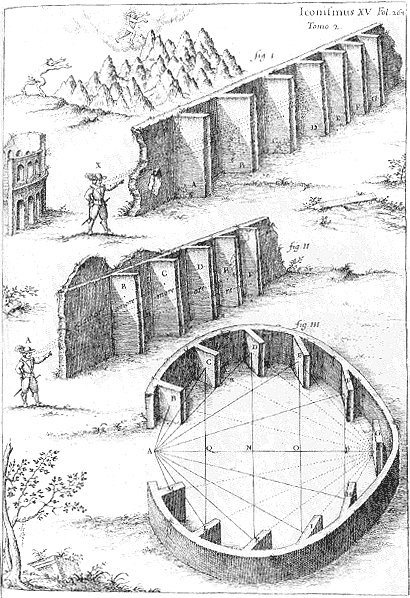Athanasius Kircher
Today, -- after Galileo. The University of Houston's College of Engineering presents this series about the machines that make our civilization run, and the people whose ingenuity created them.
Athanasius Kircher was born in Germany in 1602, just as Galileo, now thirty-six years old, was hitting his stride. Kircher studied humanities, science, languages, and math in several Jesuit schools. He also became expert in the subject of physical curiosities; and that term needs explanation.
After Columbus, the sixteenth century had become a great epoch of exploration. European ships circled the globe and came back to tell of amazing new plants, animals, and geography. Picture books appeared with lush images of curious humans, beasts, plants, and places -- some real and some imagined.
Those physical curiosities became a metaphor for a new science of observation. When Kircher became a Jesuit priest in 1628, he was schooled in the new science. Five years later, just as the Italian Inquisition called Galileo to Rome, Pope Urban VIII called Kircher to Rome as a professor of math, physics, and Oriental languages.
The Inquisition soon sent Galileo back to Tuscany under a gag order. He and Kircher didn't meet. While Kircher clearly sympathized with the sun-centered universe, he was as smooth as Galileo had been abrasive. He never lost the support of the Church. Kircher bridged the gap by continuing to speak in the language of scholars who'd set the philosophical underpinnings of the Church.
At the same time, he built a great museum to house curious objects. He wrote on magnetism. He designed machines. The brilliant Kircher knew twelve languages and was a student of ancient Egyptian hieroglyphs. He thought in symbolic terms and continued the traditional study of iconography from the century before -- the use of symbols to express deeper meanings.
He shaped his iconography around his Egyptian studies, and he actually made up his own logical language of twenty-seven icons. His purpose was to express theology concisely and accurately. It all had the mystic overtones of the alchemists who came before Galileo.
Yet he also made important observations. He was one of the first to systematically study bioluminescence -- living creatures, like fireflies, that glow in the dark. That eventually led to the discovery of the light-emitting chemical luciferin.
Kircher worked and prospered under the watchful eye of the Vatican censor. He gradually wove Galileo's ideas into the canon of accepted science. The sun, he wrote, was not a perfect crystalline sphere, but, rather, a constantly erupting ball of fire. Coming from Kircher, the censor let that pass. Kircher had become the current superstar of Italian science; he could get away with it.
All this leaves us with a sense of uneasy compromise. Galileo not only originated brilliant ideas; he was also willing to confront the establishment. But brash new ideas die if they can't become a part of normal thinking. That's where Kircher came in. Look at science in any age, and you'll find Galileos and Kirchers, the matched pairs needed to complete any scientific evolution.
I'm John Lienhard, at the University of Houston, where we're interested in the way inventive minds work.
(Theme music)
Rowland, I. D., The Ecstatic Journey: Athanasius Kircher in Baroque Rome. Chicago: University of Chicago, 2000.
I am grateful to Margaret Culbertson, UH Art and Architecture Library, for suggesting the topic and providing the Rowland source.

Athanasius Kircher illustrates the behavior of sound in his Musurgia Universalis Sive Ars Magna, 1650